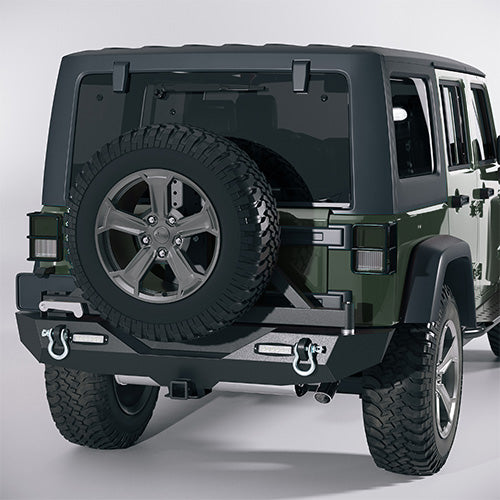
The evolution of pickup truck bumpers
The evolution of pickup truck bumpers has been a fascinating journey, reflecting advancements in design, safety, and functionality. Let's take a closer look at the key stages in the development of pickup truck bumpers:
1. Early Days: Utility and Minimalism
In the early days of pickup trucks, bumpers were simple and utilitarian. Often made of chrome-plated steel, these bumpers were designed to provide minimal protection against minor collisions. They were more about preventing damage to the vehicle's body than ensuring safety for the occupants.
2. 1950s - 1960s: Chrome and Style
During the mid-20th century, bumpers became more stylized, with chrome becoming a popular material. This era saw an emphasis on aesthetics, and manufacturers started incorporating the bumper into the overall design of the truck. Bumpers became wider and more prominent, serving both functional and decorative purposes.
3. 1970s - 1980s: Federal Safety Standards
In the 1970s, federal safety standards began to influence bumper design. Regulations required bumpers to withstand certain impact forces without damaging the vehicle's safety-related components. This led to the development of more robust bumpers that were often mounted on shock absorbers to absorb impact energy.
4. 1990s - 2000s: Integration with Safety Systems
As safety standards continued to evolve, bumpers became integrated with other safety systems, such as airbags and crumple zones. The focus shifted towards enhancing occupant safety in the event of a collision. Materials like plastic and composite materials started to replace traditional steel for weight reduction and improved energy absorption.
5. 21st Century: Advanced Materials and Technology
In recent years, there has been a shift towards using advanced materials such as aluminum and high-strength steel. These materials offer the dual benefit of reducing weight for improved fuel efficiency while maintaining structural integrity. Additionally, advancements in sensor technology have led to the integration of parking sensors and camera systems into bumpers for enhanced safety and convenience.
6. Off-Road and Aftermarket Bumpers
The growing popularity of off-road trucks has given rise to specialized bumpers designed for rugged terrain. Aftermarket manufacturers offer a wide range of bumpers with enhanced durability, approach angles, and integrated features like winch mounts and tow hooks. These bumpers cater to the needs of truck owners who use their vehicles for more demanding activities.
7. Future Trends: Autonomous and Electric Vehicles
Looking ahead, the evolution of pickup truck bumpers may be influenced by the rise of autonomous and electric vehicles. Bumpers may need to accommodate sensors and other technologies essential for autonomous driving, and there may be a continued emphasis on lightweight materials to improve the efficiency of electric trucks.
In summary, the evolution of pickup truck bumpers has been marked by a progression from simple and utilitarian designs to more sophisticated, integrated, and safety-focused features. As technology and automotive trends continue to evolve, we can expect further innovations in the design and functionality of pickup truck bumpers.